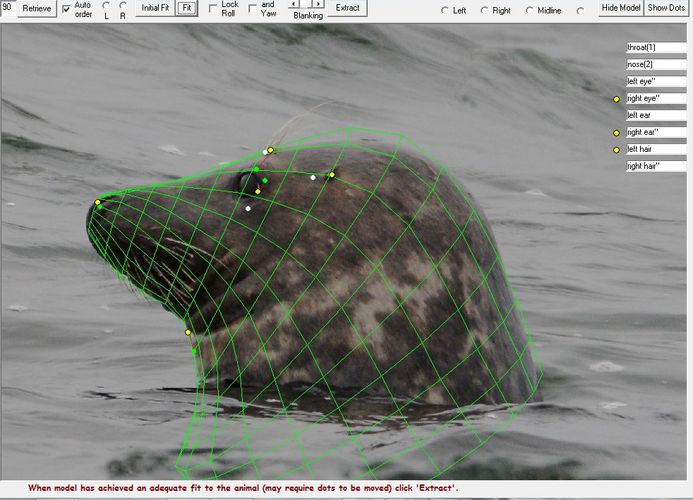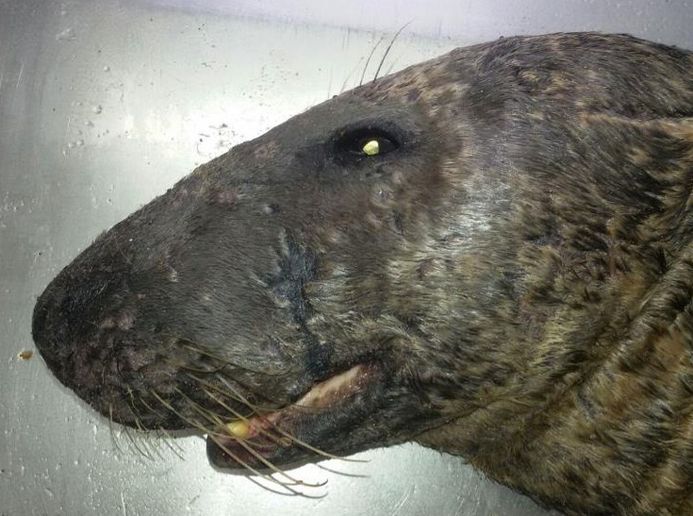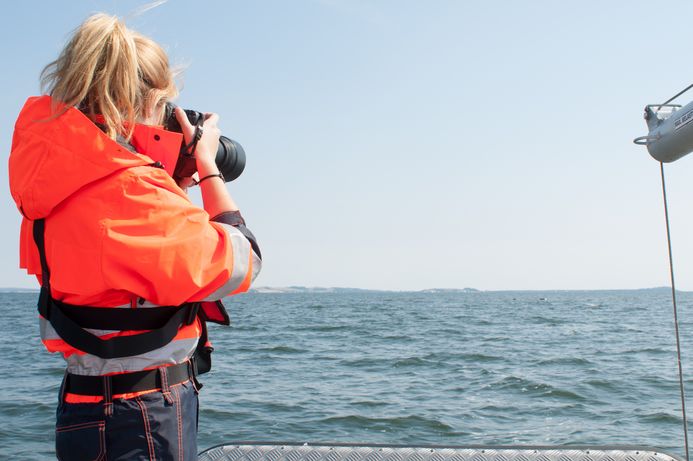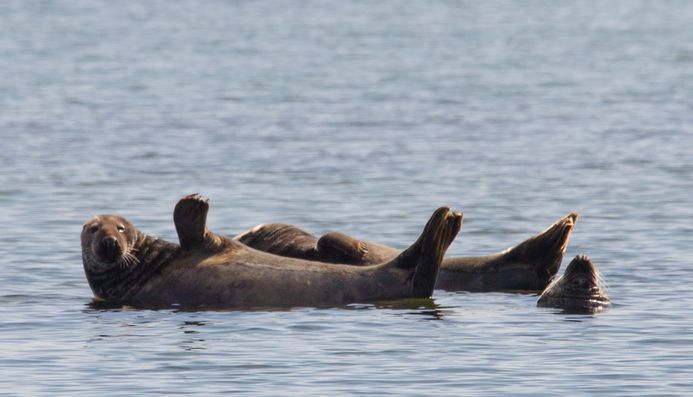Baltic Grey Seals
| Name | Grey Seals of the German Baltic Sea: Habitat use, development of haul-out sites, site fidelity and analysis of potential disturbance |
| Sponsor | Federal Agency of Nature Conservation (BfN) |
| Duration | September 2017 to August 2020 |
| Project management | Dr. Michael Dähne |
| Project staff GOM | M.Sc. Linda Westphal |
For more than 80 years grey seals (Halichoerus grypus) were assumed to be extinct in the German Baltic Sea. The reasons for their disappearance were hunt, loss of habitats and massive pollution of the Baltic Sea causing infertility. In the 1980s the Baltic grey seal was threatened with extinction while the number of seals collapsed. The number decreased from originally more than 100.000 Baltic grey seals to only 2.000 remaining individuals.
Over the last decade grey seals were sighted again year round in the German Baltic Sea. The number of seals increased steadily with seasonal fluctuations. The return to their historical sites is a highly sensitive period. For the future management of this protected species, the knowledge about potential anthropogenic disturbance is critically needed.
This research project analyses potential disturbances to grey seals as well as their habitat use and site fidelity in the German Baltic Sea. Main focus are abundance estimation, establishing quality criteria of haul-out sites, temporal and spatial distribution of seals in the research area and the effects of disturbance.
The project utilizes several techniques:
- Photo-id allows for the identification of grey seals and enables long-term abundance estimations. Data is collected during periodic counts.
- Additionally, webcams and wildlife cams along the coastline provide continuous data for photo-id. Moreover, these non-invasive camera systems give an insight into the seals’ lives and records their behavior and reactions to interfering sources, for examples boats.
- An underwater noise recorder will document the noise emissions at one haul-out site.
The results of the project serve for reporting requirements and will influence the development of indicators of the marine strategy framework directive (MSRL) and corset indicators (HELCOM). The results will feed into further international protection agreements. Furthermore, this project serves as a scientific basis for the management of grey seals in the Baltic Sea.
The project is funded by the Federal Agency for Nature Conservation.




